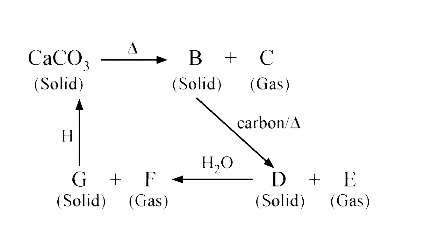Is it correct to say that Kmax is proportional to f ? If not what would a correct statement of the relationship between Kmax and f?
The correct Answer is:A, B
To determine the relationship between the maximum kinetic energy Kmax of photoelectrons and the frequency f of the incident light, we start with the photoelectric effect equation.
1. Understand the Photoelectric Effect: The photoelectric effect states that when light of sufficient frequency (or energy) strikes a material, it can eject electrons from that material. The maximum kinetic energy of these ejected electrons is given by the equation:
Kmax=E−W
where E is the energy of the incident photon and W is the work function of the material.
2. Photon Energy: The energy E of a photon can be expressed in terms of its frequency f:
E=hf
where h is Planck's constant.
3. Substituting Photon Energy into the Kinetic Energy Equation: We can substitute the expression for photon energy into the kinetic energy equation:
Kmax=hf−W
4. Expressing Work Function in Terms of Frequency: The work function W can also be expressed in terms of the threshold frequency f0:
W=hf0
where f0 is the minimum frequency required to eject an electron.
5. Final Expression for Maximum Kinetic Energy: Substituting this into the equation for Kmax:
Kmax=hf−hf0
This simplifies to:
Kmax=h(f−f0)
6. Analyzing the Relationship: From the final expression, we can see that:
Kmax∝(f−f0)
This indicates that Kmax is directly proportional to the difference between the frequency of the incident light f and the threshold frequency f0.
Conclusion:
It is not correct to say that Kmax is directly proportional to f. The correct statement is that Kmax is directly proportional to the difference (f−f0).
Kmax=E−W
where E is the energy of the incident photon and W is the work function of the material.
E=hf
where h is Planck's constant.
Kmax=hf−W
W=hf0
where f0 is the minimum frequency required to eject an electron.
Kmax=hf−hf0
This simplifies to:
Kmax=h(f−f0)
Kmax∝(f−f0)
This indicates that Kmax is directly proportional to the difference between the frequency of the incident light f and the threshold frequency f0.
It is not correct to say that Kmax is directly proportional to f. The correct statement is that Kmax is directly proportional to the difference (f−f0).
Topper's Solved these Questions
- MODERN PHYSICS - 1BOOK - DC PANDEY ENGLISHCHAPTER - MODERN PHYSICS - 1EXERCISE - Level -1 Assertion And Reason
10 Videos
- MODERN PHYSICS - 1BOOK - DC PANDEY ENGLISHCHAPTER - MODERN PHYSICS - 1EXERCISE - Level 1 Objective
37 Videos
- MODERN PHYSICS - 1BOOK - DC PANDEY ENGLISHCHAPTER - MODERN PHYSICS - 1EXERCISE - Exercise 33.3
6 Videos
- MODERN PHYSICSBOOK - DC PANDEY ENGLISHCHAPTER - MODERN PHYSICSEXERCISE - Integer Type Questions
17 Videos
- MODERN PHYSICS - 2BOOK - DC PANDEY ENGLISHCHAPTER - MODERN PHYSICS - 2EXERCISE - Level 2 Subjective
10 Videos
Similar Questions
What is the relationship between KpandKc ?
View Solution
The correct statement about F is
View SolutionWhat is the relationship between pKa and Ka of an acid ?
View SolutionWhat is the relationship between pKa and Ka of an acid ?
View SolutionWhat is the relationship between pKa and Ka of an acid ?
View SolutionThe correct statement regarding F-centre is:
View SolutionWhich statements is correct regarding the diagonal relationship between the Al and Be?
View SolutionWhich of the following statements relationship is not correct?
View SolutionIs it correct to say that in a histrogram, the area of each rectangle is proportional to the class size of the corresponding class interval? If not, correct the statement.
View SolutionIf α is the degree of ionization, C the concentration of a weak electrolyte and Ka the acid ionization constant , then the correct relationship between α and C is
View Solution
